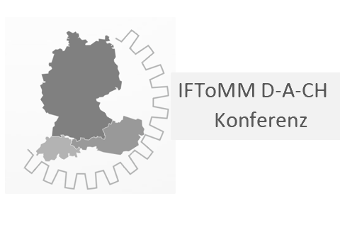Höhere inhärente Sicherheit bei Mensch-Roboter-Kollaborationen durch geeignete Antriebskonzepte
Für manche Handhabungsaufgaben im Automatisierungsbereich sind Sonder-Roboterkinematiken gefordert. Daher be-steht die Notwendigkeit, ebendiese für spezielle Bewegungsaufgaben und Umgebungsbedingungen effizient zu syntheti-sieren und auszugestalten. In diesem Beitrag wird aufgezeigt, wie durch Variation der Position der Antriebskomponenten gewisse Eigenschaften des Roboters gezielt beeinflusst werden können, um somit die inhärente Sicherheit des Systems zu erhöhen, sodass der Roboter für eine Mensch-Roboter Kollaboration schon von mechanischer Sicht aus geeignet ist. Besonderer Fokus liegt dabei auf der antriebskonzeptbedingten Änderung der bewegten Massen des Roboters sowie der Veränderung des Bauraumes, welcher die Störkontur bildet. Für eine Evaluierung der Eigenschaften und einen Vergleich zum konventionellen Antriebskonzept wurde eine SCARA Sonderkinematik entwickelt und realisiert, bei der alle An-triebe in der Basis des Roboters montiert sind und die Rotationen und Momente mittels Synchronriemen an die jeweilige anzutreibende Ache übertragen werden.
In case of automatization of specific handling-tasks, it is necessary to develop novel robots with special kinematics. Thus, there is a need to efficiently synthesize these robots for the required motion tasks, environments and constraints. This article shows how certain properties of the robotic system can be influenced in a targeted manner by varying the position of the drive components to increase the inherent safety of the system, so that the robot is suitable for human-robot collab-oration from a mechanical point of view. The focus lies on the drive concept related changes in the moving masses of the robot as well as the change in the installation space that forms the interference contour of the moving robot. For an evaluation of the properties and a comparison to the conventional drive concept, a special SCARA robot is developed and implemented, in which all motors are mounted in the base of the robot and the rotations and moments are transmitted to the respective axis by using synchronous belts.
Vorschau

IFToMM D-A-CH Konferenz
Zitieren
Zitierform:
Zumpe, Veronika/Huesing, Mathias/Corves, Burkhard (2020): Höhere inhärente Sicherheit bei Mensch-Roboter-Kollaborationen durch geeignete Antriebskonzepte. In: Sechste IFToMM D-A-CH Konferenz 2020: 27./28. Februar 2020, Campus Technik Lienz. Online unter: https://nbn-resolving.org/urn:nbn:de:hbz:464-20200220-162134-7.
Zitierform konnte nicht geladen werden.
